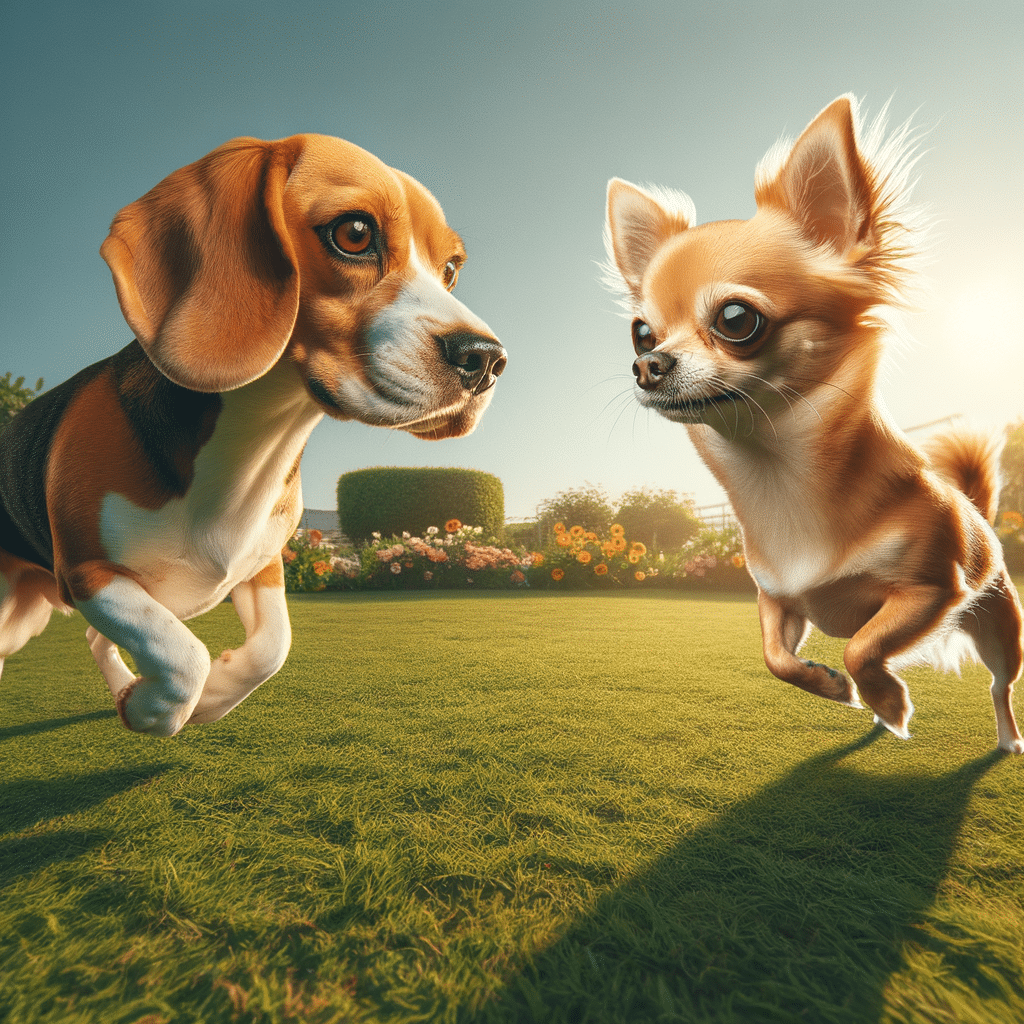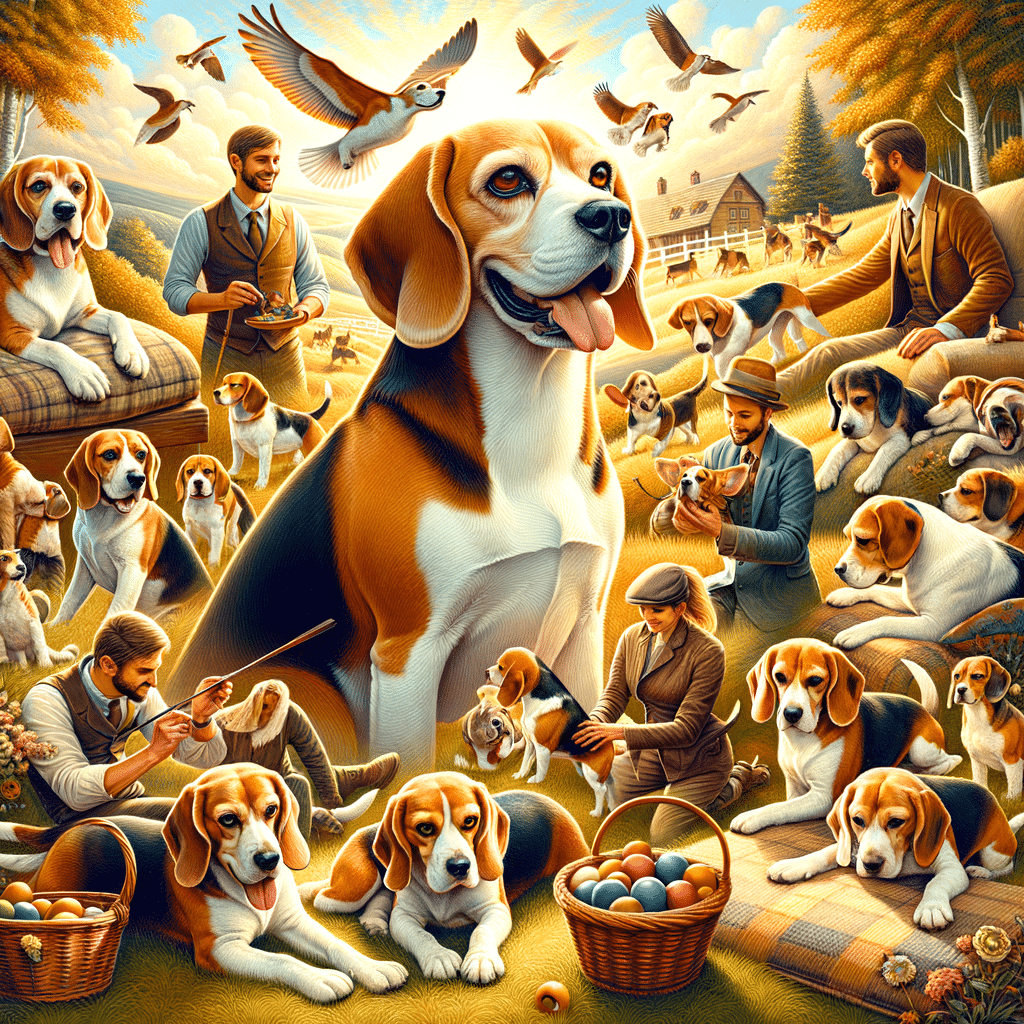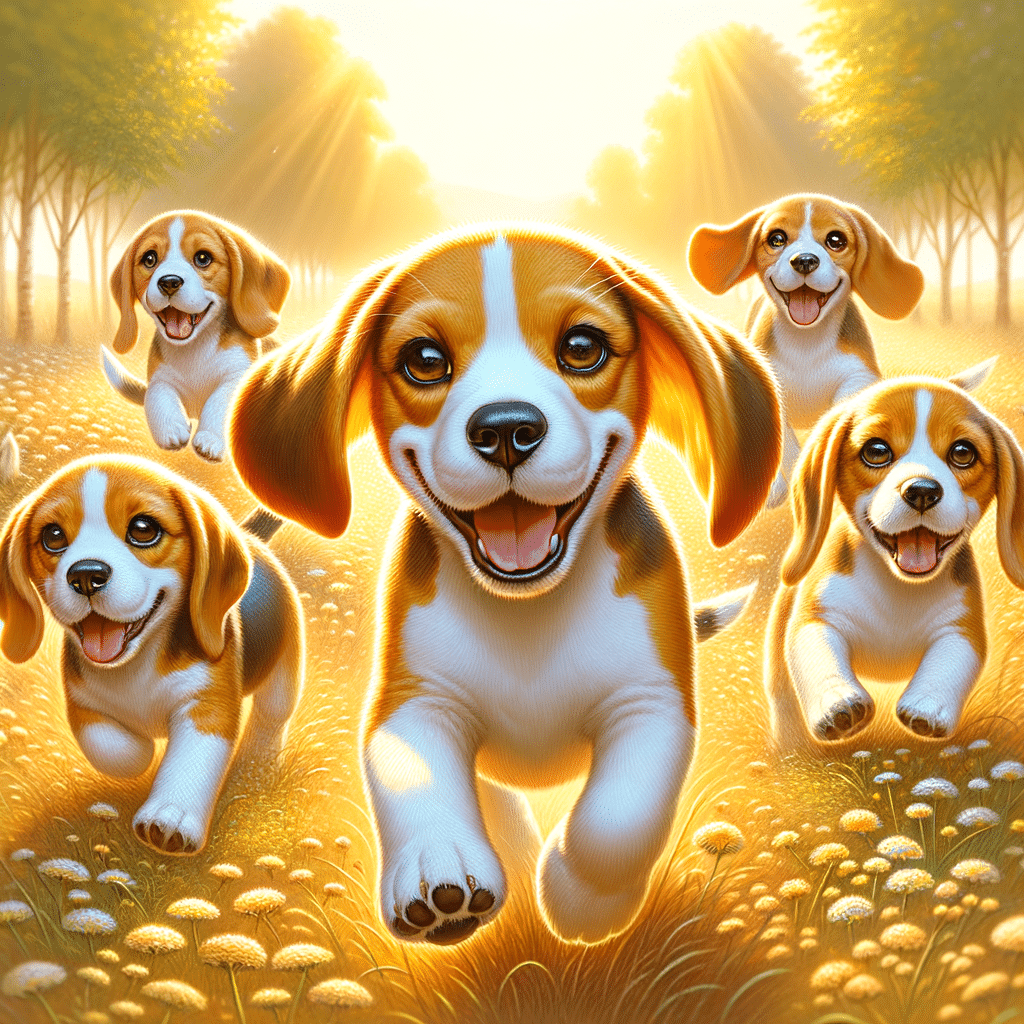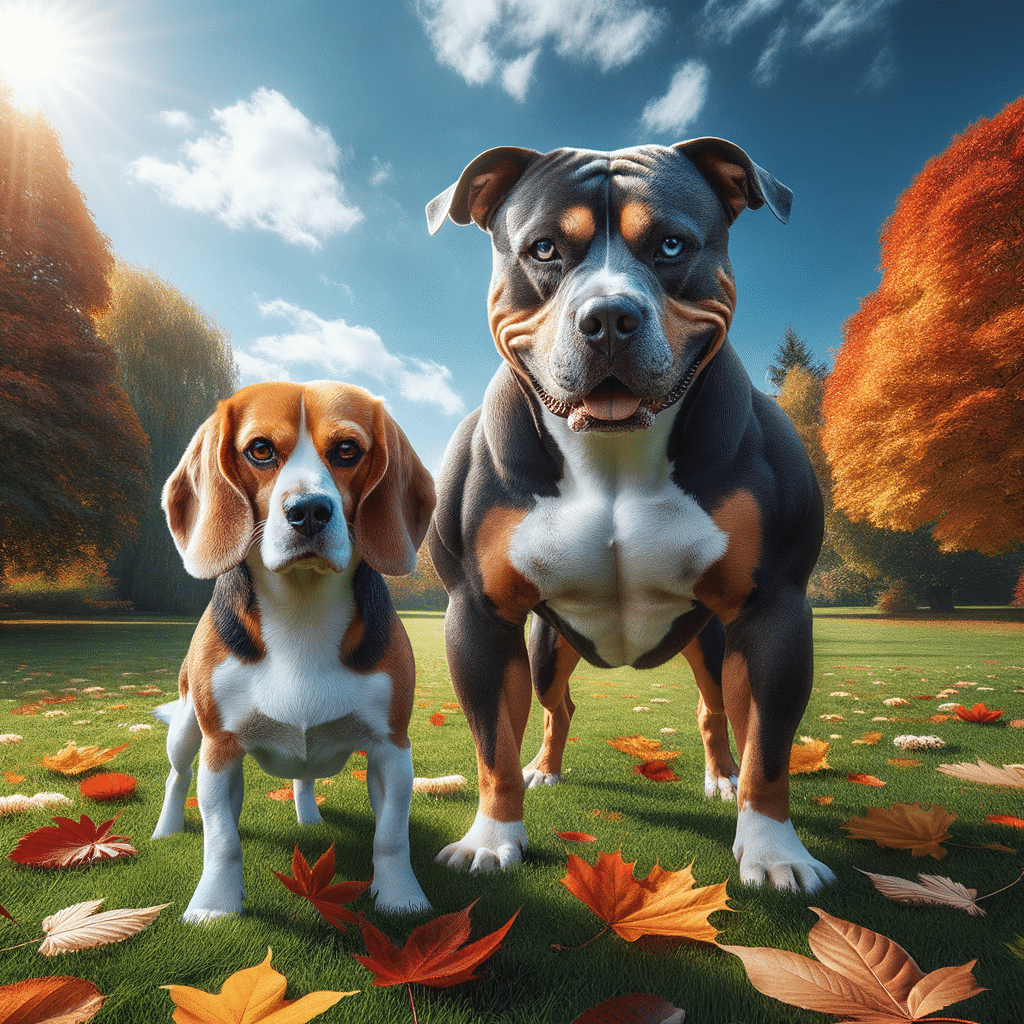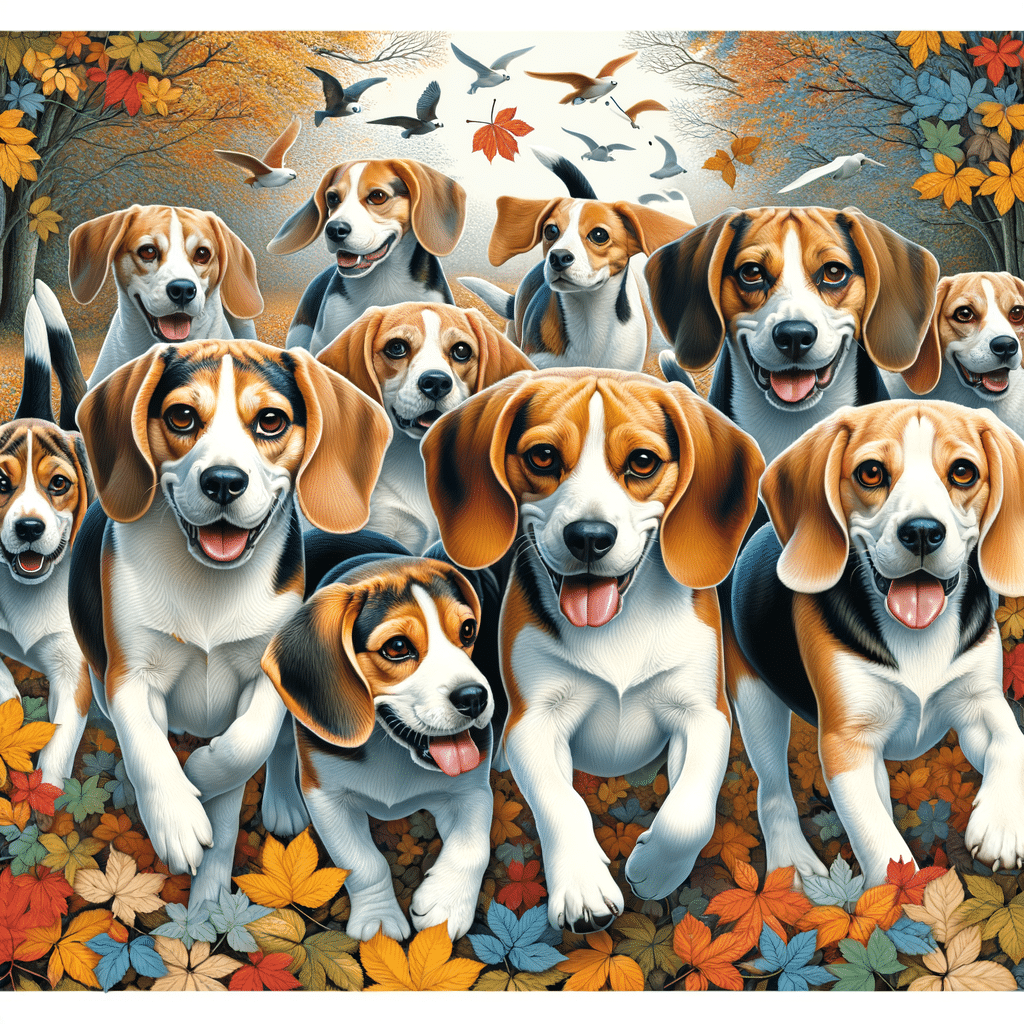When choosing the perfect canine companion, you may compare different breeds to find a match that suits your lifestyle. When selecting between a beagle vs. dachshund, a detailed comparison of the behaviors of these animals can be an invaluable tool.
In This Article
These are two popular dog breeds that frequently come up for comparison. Both breeds have a strong following, thanks to their unique characteristics and endearing personalities, making the decision tough for dog lovers.
Beagles are friendly and inquisitive, often excelling in families, thanks to a good-natured disposition towards children. With their distinctive long bodies and short legs, Dachshunds bring a playful yet protective energy to their home environments. They are affectionate and intelligent, with a more independent streak than beagles. Your choice between a beagle and a dachshund may come down to subtle differences in physical characteristics, temperament, and care needs that align better with your expectations and experience with dogs.
Highlights
- Beagles and dachshunds are suitable for families but have distinct physical and temperamental traits.
- A beagle’s friendly demeanor makes it a joyful addition to a household, while a dachshund’s intelligence commands a more engaging training approach.
- Choosing between the two breeds hinges on understanding their care requirements and how well they fit into an owner’s lifestyle.
Breed Origins and History
The history of beagles and dachshunds starts with their origins as hunting dogs. Each breed comes from distinct European countries with unique traits tailored for specific game types.
Beagles: A Hunter’s Companion
Beagles have roots in England, where their breeding yielded a keen sense of smell and stamina for tracking and hunting small game. Historical evidence suggests the existence of beagle-like dogs as far back as Roman times.
As they are recognized today, the modern beagle began to be developed in the 1830s, often called the North Country beagle. Breeding involved hounds of similar size to create a dog that was both an adept hunter and a loyal companion, whether you have a beagle puppy or an adult dog.
Dachshunds: From Germany to the World
The dachshund’s history can be traced to 15th-century Germany. The name “dachshund” translates to “badger dog,” indicating their original purpose was to track and hunt burrow-dwelling animals like the badger.
Their elongated bodies and short legs allowed them to dig into burrows and flush out the game. Over time, they gained popularity beyond hunting circles for their distinctive looks and spirited personality.
Physical Characteristics
When distinguishing between beagles and dachshunds, the disparities in their physical dimensions, fur types, and prominent physical features are noteworthy. These breeds have distinct physical characteristics that cater to different preferences and lifestyles of potential owners.
Size and Weight Comparison
Beagle
- Height: 13-15 inches
- Weight: 15-30 pounds
Dachshund
- Height: 8-10 inches
- Weight: 16-32 pounds
For a beagle overview, you’ll find a generally taller dog, with a height ranging from 13 to 15 inches, whereas the dachshund is known for its petite stature, standing only 8 to 10 inches tall. Despite the height difference, dachshunds can match or sometimes exceed the weight of beagles, weighing anywhere from 16 to 32 pounds. However, beagles typically weigh between 15 to 30 pounds, displaying a weight profile that is quite similar to their fellow canine counterparts.
Coat Types and Colors
Beagle
- Coat: Short, dense, and smooth
- Colors: Tricolor, red and white, lemon, blue tick, among others
Dachshund
- Coat: Can be smooth, wire-haired, or long-haired
- Colors: Solid, bi-color, dapple, brindle, piebald, among others
Beagles possess a short, smooth coat that is dense enough to protect without requiring extensive grooming. The breed is frequently seen in variations of tricolor, red and white, lemon, and blue tick. In contrast, dachshunds come in three different coat types: the smooth coat, the wire-haired, and the long-haired, each necessitating distinct grooming needs. Their color patterns are diverse, including solid, bi-color, dapple, brindle, and piebald.
Distinctive Physical Traits
Beagle
- Appearance: Sturdy and muscular frame, with a long tail and large, expressive eyes
Dachshund
- Long body: Renowned for its elongated body
- Short legs: Their short, sturdy legs contribute to their unique silhouette
Beagles are well-built dogs with a sturdy, muscular frame. They have a compact appearance, with a long tail often carried high and large, expressive eyes that bestow a friendly demeanor. Dachshunds boast a legendary long body and short legs, which define the breed’s easily recognizable profile. Their diminutive legs, though short, are quite robust and add to their distinctive charm.
Temperament and Personality Traits
When considering the beagle versus the dachshund, distinctive temperament and personality traits set these breeds apart, influencing their interactions with families and other pets. The beagle is renowned for its amiable disposition, while the dachshund is admired for its courageous persona.
Beagle’s Friendly Nature
The beagle is friendly and sociable, typically displaying an affectionate bond with their family. Known for their loving temperament, beagles are well-suited for households with children and other pets. Their intelligence and playful spirit make them joyful companions, but they can also show a stubborn streak that requires patient training. Beagles have an average energy level and enjoy regular play and exploration, which aligns with their curious and adventurous inclinations.
Dachshund’s Courageous Attitude
Dachshunds are independent and courageous, often showing a protective attitude towards their family. Despite their smaller stature, they are surprisingly bold and stubborn, necessitating consistent training from a young age.
Regarded as intelligent and affectionate, dachshunds can be good with children if socialized properly. Their energy levels are average but can vary by coat type; the wirehaired variety tends to be more energetic. This breed’s inquisitive behavior, coupled with their loving personality, makes them engaging pets, though their strong character requires an understanding of their independent traits.
Care and Health Considerations
When choosing between a beagle and a dachshund, it’s essential to understand their exercise and grooming needs, as well as common dog health challenges. Each dog breed requires attention to stay healthy and happy, and prospective owners should be aware of its unique considerations.
Exercise and Activity Needs
A beagle has plenty of energy and stamina but needs regular exercise to maintain their health and prevent obesity. They benefit from daily walks and play sessions, and they enjoy activities that satisfy their strong sense of smell.
- Daily exercise: At least 30 minutes of walking, plus playtime.
- Mental stimulation: Regular opportunities to explore and track scents.
Dachshunds possess a moderate energy level but are prone to obesity if not adequately exercised. Exercise should be gentle to support their long spine to prevent back issues. As a pet parent, do not do dog sports with this breed group.
- Daily exercise: Short, frequent walks and light play.
- Mental stimulation: Games and toys that engage their hunting instincts.
Grooming and Maintenance
Beagles have a short, dense coat that requires minimal grooming. Regular brushing can help manage shedding and keep the coat healthy.
- Brushing frequency: Weekly brushing, more during seasonal shedding.
- Bathing: Monthly or as needed.
Dachshunds have three coat types—smooth, long-haired, and wire-haired—each with different grooming requirements. The smooth coat requires the least grooming, while long-haired and wire-haired dogs need more frequent brushing from a dog groomer or pet owners to avoid tangles and matting.
- Brushing frequency: Smooth – weekly; Long-haired and Wire-haired – 2-3 times per week.
- Bathing: Every 3-4 weeks, based on coat type and as needed.
Common Health Issues
As a breed, beagles are predisposed to certain health issues, such as epilepsy, hypothyroidism, and obesity. Due to their floppy ears, they can also be prone to ear infections, so regular ear checks and cleaning are crucial. Dog owners may consider dog insurance to help with potential health costs.
- Health screening: Regular veterinary check-ups to monitor for common conditions.
- Weight management: Careful diet control and exercise to prevent obesity.
Prominent health concerns for dachshunds include intervertebral disc disease (related to their long spines), hip dysplasia, and certain types of heart disease. Weight control and avoiding high-impact activities are essential for their well-being.
- Health screening: Regular exams, with attention to spine and hip health.
- Activity caution: Avoid stairs and jumping to reduce spinal strain.
Frequently Asked Questions
This section addresses common inquiries prospective owners may have about the differences and characteristics of beagles and dachshunds.
How does the temperament of a beagle compare to that of a dachshund?
Beagles are generally friendly, curious, and merry, making them excellent companions for families with children. Dachshunds can be more independent and stubborn, but they are intelligent and can be affectionate with their owners.
What are the size differences between beagles and dachshunds?
Beagles tend to be larger than dachshunds. They usually weigh between 20 and 30 pounds and stand about 13 to 15 inches tall at the shoulder. On the other hand, dachshunds typically weigh less than 32 pounds for standard variants, and their height at the shoulder is around 8 to 9 inches.
What should you expect from a beagle and dachshund mix regarding characteristics and health?
A beagle and dachshund mix, often known as a doxle, often has a combination of traits, such as playfulness, friendliness, and a strong sense of smell. Healthwise, the mix may inherit predispositions from both breeds, like back issues from the dachshund or ear infections from the beagle.
Can beagles and dachshunds typically coexist peacefully as pets?
Both beagles and dachshunds can coexist peacefully if properly introduced and socialized. Beagles are social and likely to be welcoming, while dachshunds, due to their more reserved natures, may need time to adjust.
What are the common traits of aggression in dachshunds, and how can they be managed?
Dachshunds can show territorial behavior and may be less tolerant of strangers and other dogs. These behaviors can be managed with early socialization, consistent training, and positive reinforcement techniques to promote good behavior.
How affectionate are beagles, and do they enjoy cuddling with their owners?
Beagles are known for their affectionate and loving nature. They enjoy being in the company of their owners and often display their affection through cuddling and seeking physical attention.
